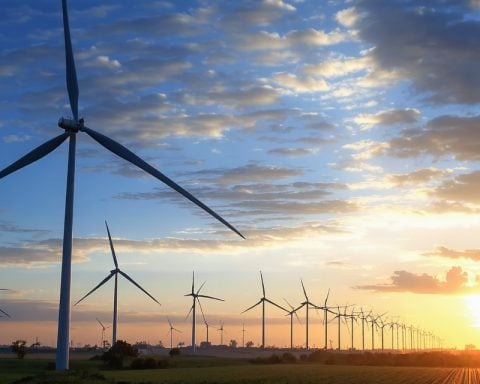The U.S. Department of Transportation is set to invest a striking $122.9 million into six groundbreaking projects across California, aimed at establishing sustainable charging and fueling infrastructure for zero-emission vehicles. Senator Alex Padilla, a champion for clean air, emphasized the importance of this funding, which includes over $55 million dedicated to supporting medium- and heavy-duty zero-emission vehicles.
The federal initiative, part of the Bipartisan Infrastructure Law, strategically enhances electric vehicle (EV) charging stations and alternative fueling systems in both urban and rural settings. A significant chunk, nearly $55.9 million, will allow the California Energy Commission to introduce 21 public charging stations alongside a hydrogen refueling station, ultimately benefiting long-haul freight operations.
Several cities are benefitting from this initiative. San Francisco will receive $15 million to add 300 charging ports, focusing on disadvantaged communities. Santa Cruz’s project, receiving $14.35 million, aims to install chargers at various local government sites to bolster equity. Meanwhile, San Bernardino will establish its inaugural public charging network with $14.06 million funding. San Jose will see 237 chargers installed across the region, while Sacramento will implement charging stations in disadvantaged areas with an $11.63 million grant.
With these efforts, California is making significant strides toward a cleaner transportation future, addressing both public health and environmental sustainability.
Revolutionizing California’s Green Energy Landscape: Massive Investment in Zero-Emission Vehicles
The U.S. Department of Transportation is making a significant commitment to a sustainable future with its recent announcement of a $122.9 million investment in six innovative projects across California. This funding is focused on the development of advanced charging and fueling infrastructure for zero-emission vehicles, a critical step in the transition toward cleaner transportation.
Overview of the Investment
This substantial funding initiative, part of the Bipartisan Infrastructure Law, aims to enhance electric vehicle (EV) charging stations and alternative fueling systems throughout both urban and rural areas. It is particularly noteworthy that over $55 million is earmarked specifically for the support of medium- and heavy-duty zero-emission vehicles. This focus on larger vehicles underscores the importance of reducing emissions across all segments of the transportation sector.
Highlights of the Projects
A diverse array of projects will benefit from this funding:
– California Energy Commission: $55.9 million designated to launch 21 public charging stations and a hydrogen refueling station, crucial for long-haul freight operations.
– San Francisco: $15 million allocated to install 300 charging ports with an emphasis on serving disadvantaged communities, ensuring equitable access to clean transportation options.
– Santa Cruz: With an investment of $14.35 million, this initiative aims to set up charging stations at various local government sites, promoting accessibility and sustainability.
– San Bernardino: The city is poised to develop its first public charging network with a $14.06 million grant, marking a pivotal moment in urban EV infrastructure.
– San Jose: This project plans to install 237 chargers throughout the area, supporting the growing demand for electric vehicles.
– Sacramento: An $11.63 million grant will facilitate the implementation of charging stations in low-income neighborhoods, further advancing equity in transportation.
Benefits of the Initiative
Environmental Impact
The investment will significantly lower greenhouse gas emissions, contributing to California’s ambitious climate goals. By facilitating the adoption of zero-emission vehicles, the initiative supports air quality improvements and public health, particularly in communities disproportionately affected by pollution.
Economic Growth
The establishment of charging networks is expected to stimulate job creation in the green energy sector, fostering economic growth while transitioning to sustainable energy solutions.
Challenges and Limitations
While this investment represents a step forward, challenges lie ahead. Infrastructure deployment can take time, and there may be hurdles in public acceptance and usage of new charging stations. Additionally, ensuring all communities have access to these facilities will require ongoing efforts and resources.
Looking Ahead
As California moves forward with this initiative, various stakeholders will be watching for outcomes. The integration of renewable energy sources with charging infrastructure could pave the way for innovations in energy management and storage. Furthermore, the trends in EV adoption and infrastructure development suggest a robust market for electric vehicles, which could further drive sustainability initiatives.
For further insights into the impact of these projects and ongoing trends in clean transportation, visit California Energy Commission and U.S. Department of Transportation to learn more about related developments in green energy initiatives.
In conclusion, this significant investment in zero-emission vehicle infrastructure not only aims to transform California’s transportation landscape but also sets a precedent for other states to follow in the pursuit of sustainable energy solutions.












